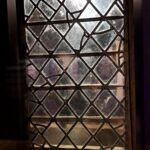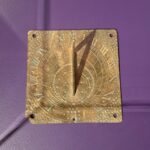By Waverly Winchester
A new New York Historical Society exhibition seeks to ask: In moments of injustice, what role do we play?
Halloween has just passed, and now taking its place, we have the start of a new holiday season, leaving all the witches and ghosts, and goblins behind. They’re already a distant memory, with eerie music and spooky decorations immediately replaced by the jolly sounds and festive sights of “the most wonderful time of the year.”
However, one “witchy” thing remains, and it is an important one. In fact, it’s been important for over 300 years. Most of us are familiar with the story – in 1692, in Colonial Massachusetts, more than 200 innocent people were accused of practicing witchcraft, and 25 were executed, mainly women. What we rarely think about, though, in this “story” is that it actually happened, and it’s not just a long-ago tale about false accusations and a story to tell around Halloween. These were real people, real lives that were lost, and the way it happened is not so far off from being able to happen again, even in America in 2022.
The Salem Witch Trial exhibit at New York Historical Society brings actual artifacts and court documents to remind us of all of this and to hopefully have us ask ourselves, “How would I have acted back then, and how do I act now in similar situations?
It was definitely one of the most interesting exhibits I’ve been to. I learned a lot and saw a lot I never thought I would be able to encounter. Some of the most interesting things I saw was a full, undamaged window from a long time ago, which relates back to the story of the Towne sisters, three sisters who got accused of being witches and one actually escaping. We also saw an old sundial owned by John Proctor and chests from the citizens of Salem’s houses. 
This exhibit is worth visiting for many reasons. It has real artifacts that can take you right back to the 1600s, reminding you that this is much more than just a story, as well as cool sounds and lighting, which can help visitors experience it even more. Many in-depth stories from “accused witches ” are presented, which are detailed and easy to get lost in. Near the end of the exhibit are pictures and stories from witches today, sharing their thoughts and experiences. These were very interesting to learn about, and they show that traditions from 500 years ago are still relevant today, and not nearly as “dangerous” as it was thought of in the past.
The Witch Trials show how injustice to women was a big part of history and how badly they were treated for essentially just existing. If you got accused of being a witch, there was almost no way around it. Everything could be used against you, and every possible way out was actually a way to death. I believe everyone should learn about this because it was a harsh and suspenseful time in history that can teach students more about the past while also having them learn more about themselves. While I was gazing through the original window at the exhibit, it was like gazing into a mirror into myself, and I asked myself, who would I have been back then?
And, most importantly, who am I now?
